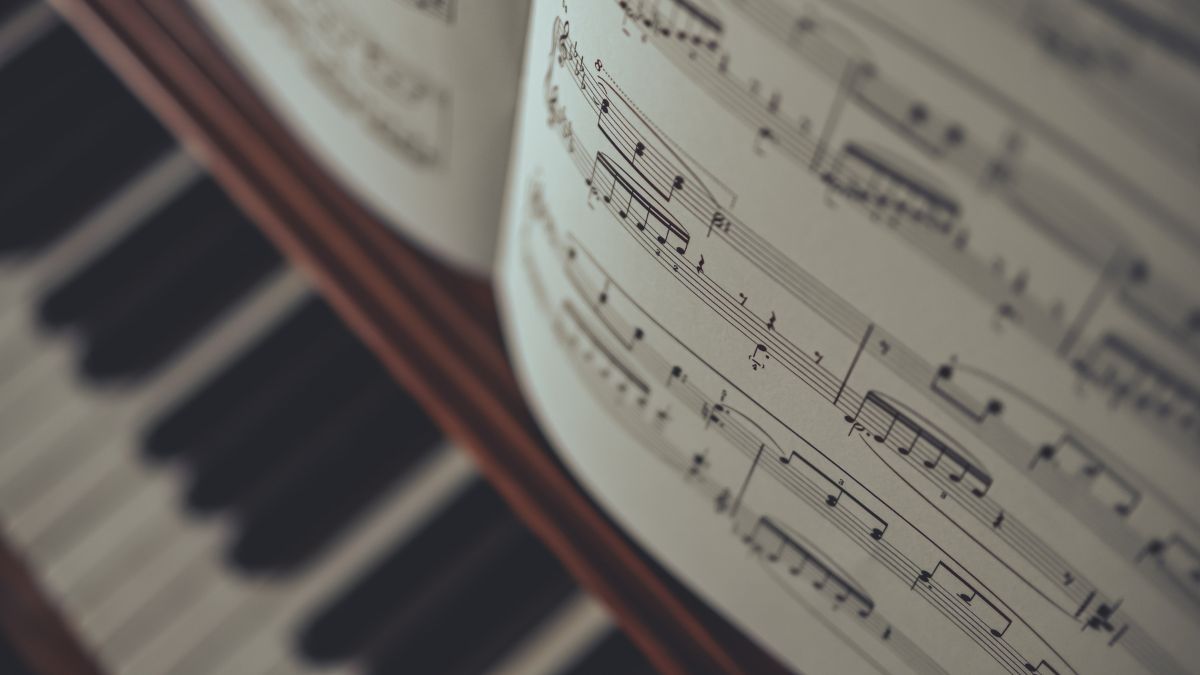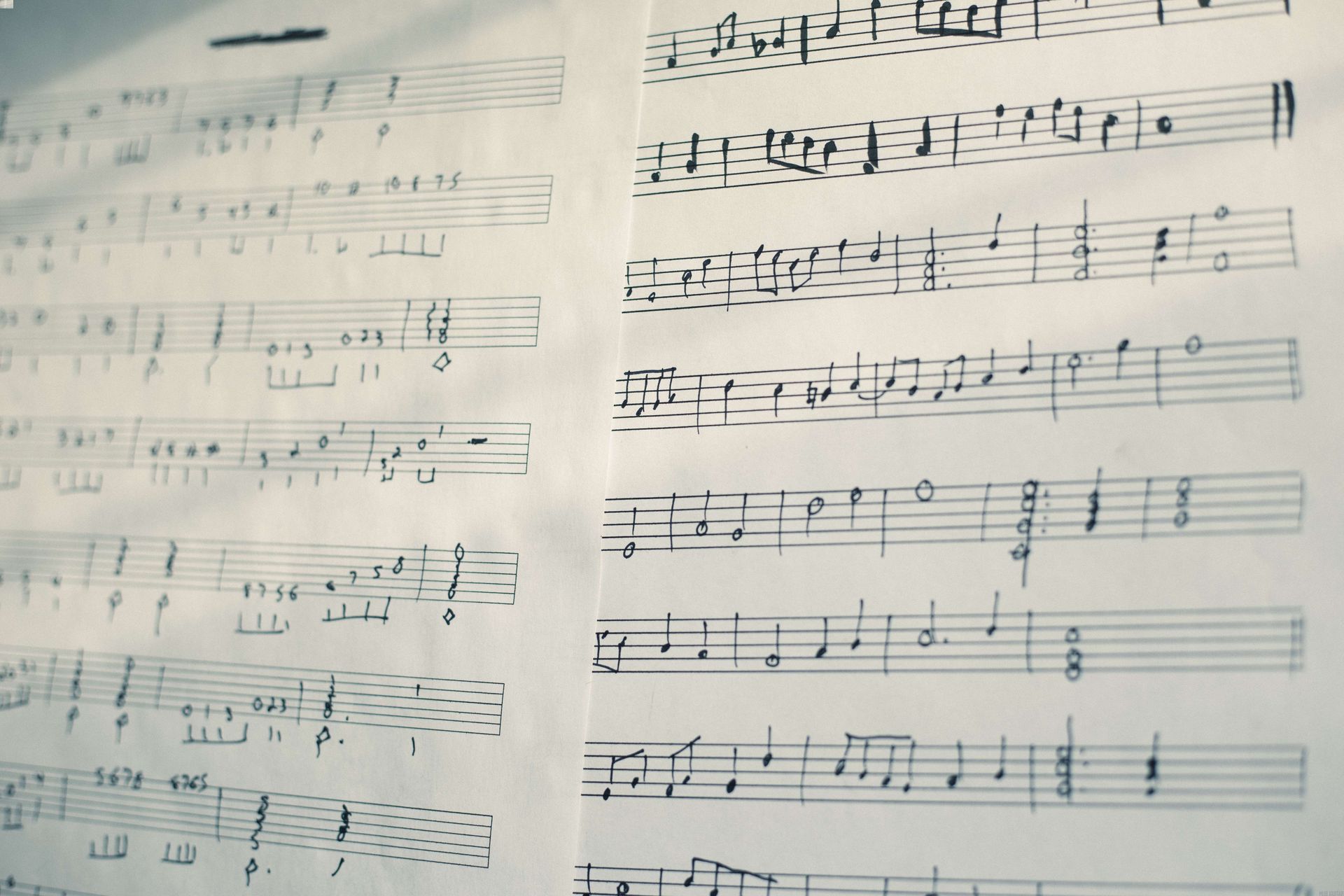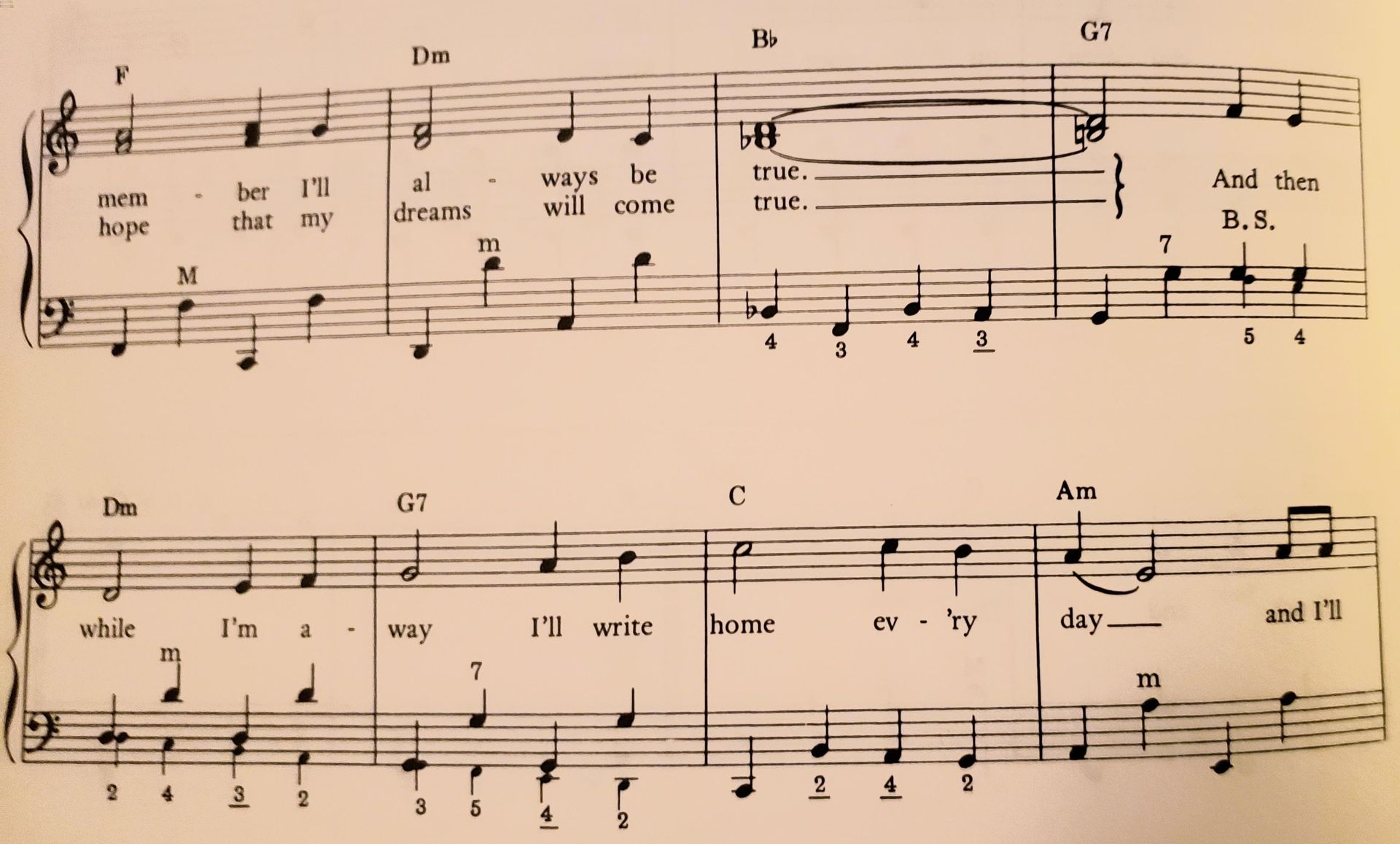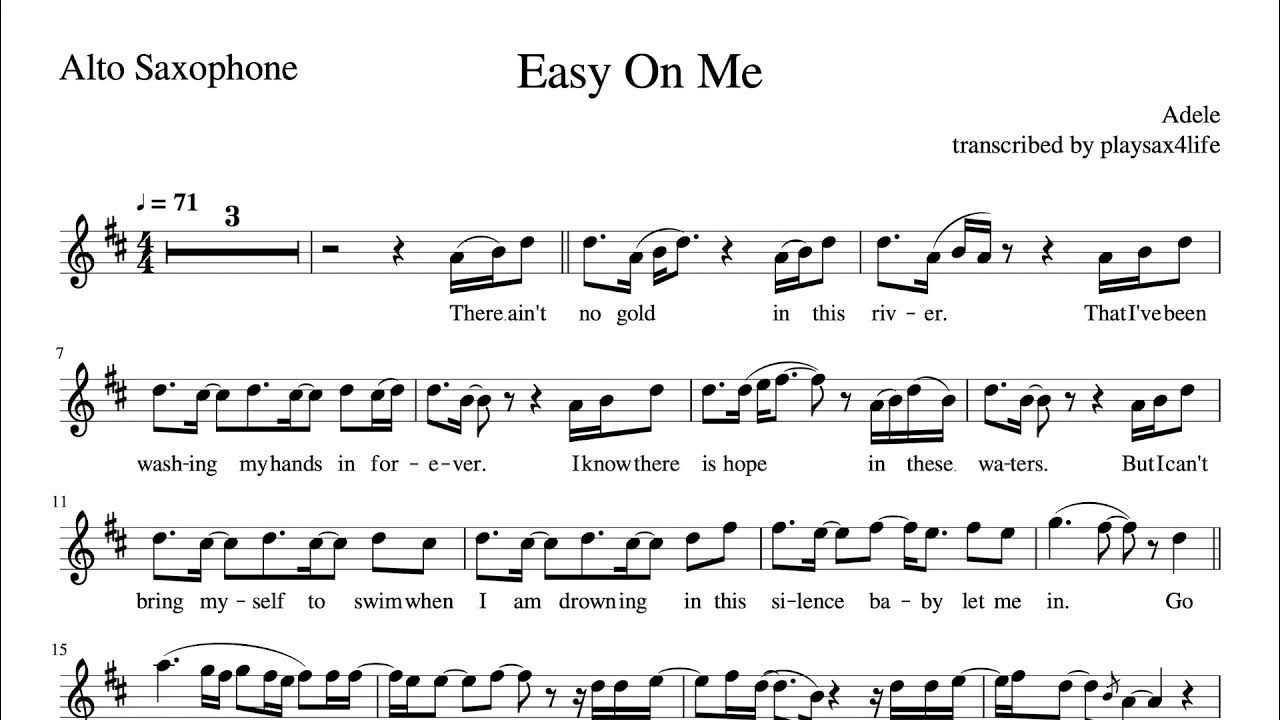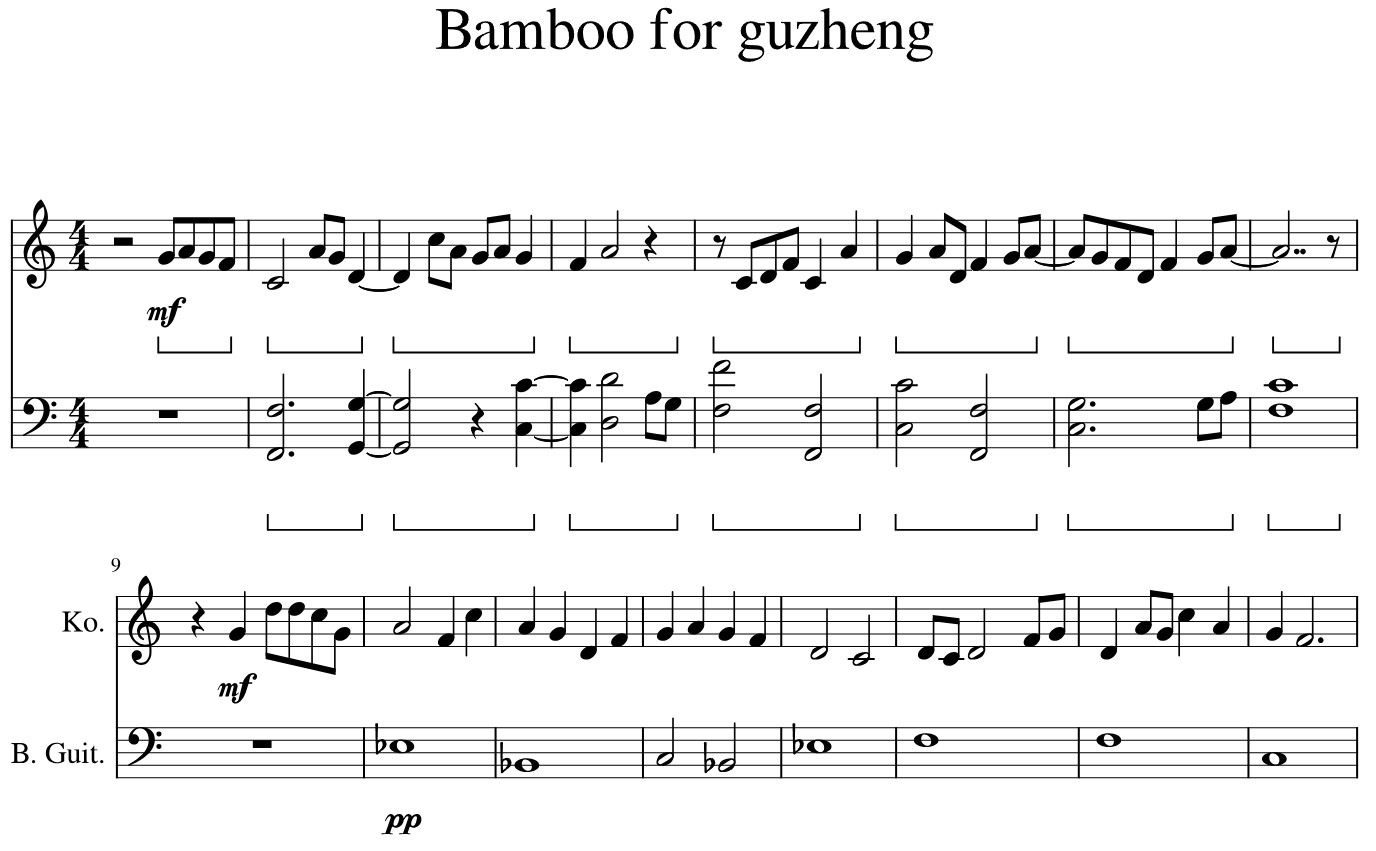Home>Production & Technology>Sheet Music>How To Read Sheet Music Cello
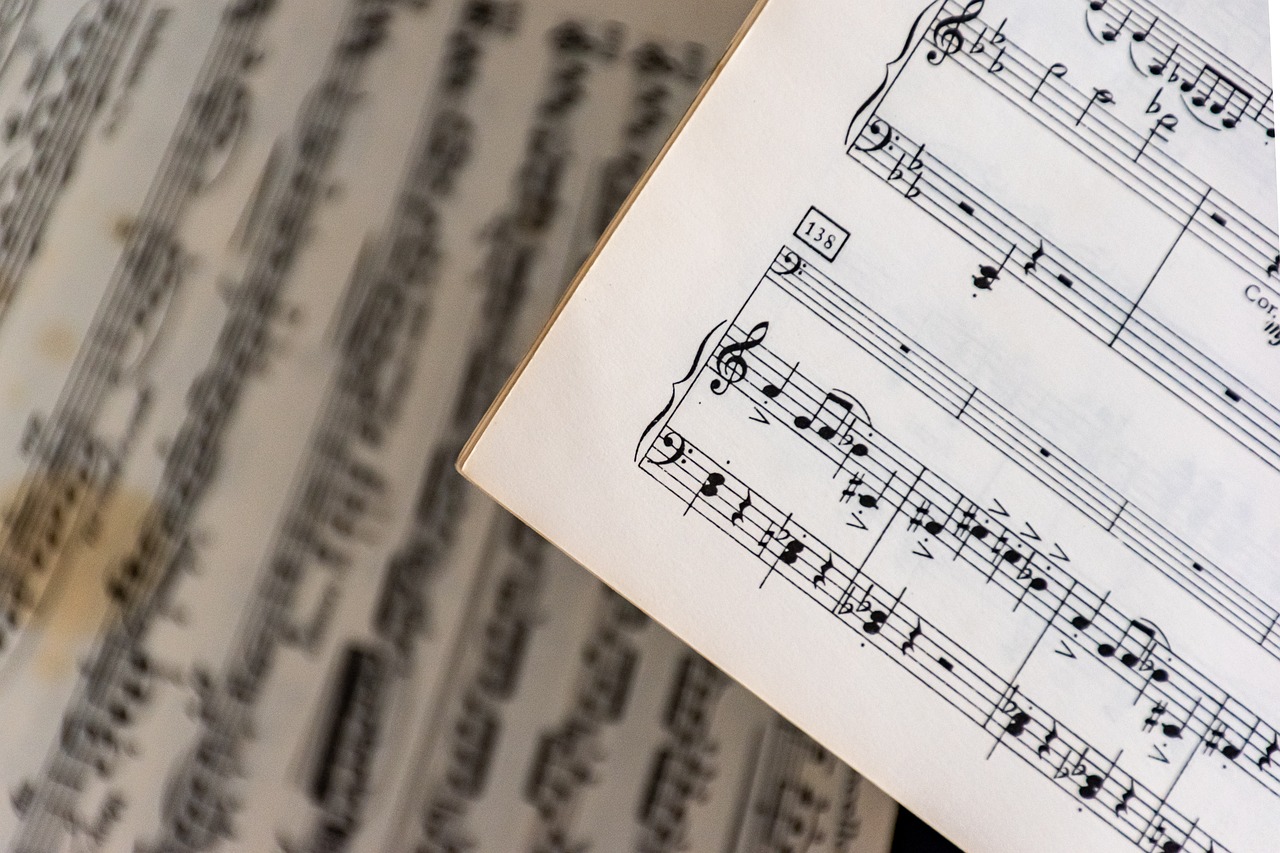

Sheet Music
How To Read Sheet Music Cello
Modified: January 22, 2024
Learn how to read sheet music for cello with our comprehensive guide. Discover the essential techniques and symbols used in sheet music for a smooth playing experience.
(Many of the links in this article redirect to a specific reviewed product. Your purchase of these products through affiliate links helps to generate commission for AudioLover.com, at no extra cost. Learn more)
Table of Contents
Introduction
Welcome to the world of sheet music! Whether you’re a beginner cellist or an experienced musician, being able to read sheet music is an essential skill that opens up a world of musical possibilities. Sheet music provides a standardized language for communicating musical ideas, allowing musicians to bring compositions to life.
Learning to read sheet music may seem daunting at first, but with a little practice and guidance, you’ll soon be able to decipher the musical symbols and notations on the page. This article will serve as your comprehensive guide to understanding and interpreting sheet music for the cello.
Sheet music is written on staves, which consist of horizontal lines and spaces. Each line and space corresponds to a specific pitch, enabling the musician to play the correct notes. The placement of various symbols, such as notes, rests, and dynamic markings, provides further instructions on how to perform the music with proper timing, expression, and intensity.
Throughout this article, we will explore the fundamental elements of sheet music, from clefs and note names to rhythms and key signatures. We’ll also delve into advanced topics like dynamics, articulations, and bowing techniques, which add nuance and expression to your performance.
Whether you’re aspiring to play classical masterpieces or embrace contemporary compositions, understanding sheet music is crucial. It allows you to interpret and play music accurately while conveying the composer’s intended emotions and musical ideas. So, grab your cello, and let’s dive into the fascinating world of sheet music!
Basics of Sheet Music
Before we embark on our journey to becoming proficient in reading sheet music for the cello, let’s start with the basics. Sheet music is a written representation of music, consisting of a series of symbols and notations that convey musical information to the performer.
The first step is to familiarize yourself with the staff, which is a set of five horizontal lines and four spaces. These lines and spaces represent different pitches, allowing us to identify and play specific notes on the cello. The staff is divided into measures, also known as bars, which help organize the music into manageable sections.
To indicate the pitch of a note, sheet music uses a system of clefs. The most common clef used for cello music is the bass clef, also known as the F clef. The bass clef defines the position of the note F on the fourth line of the staff, providing a reference point for the other notes.
Notes are represented by oval-shaped symbols placed on the lines and spaces of the staff. Each note corresponds to a specific duration, indicated by the presence of a stem, flags, or beams. Rests, on the other hand, represent periods of silence, allowing the musician to take a pause before continuing.
Sheet music also includes other symbols and markings that provide additional instructions for performance. Dynamics indicate the volume of the music, ranging from soft to loud, while articulations determine how the notes are played, such as staccato, legato, or accent marks.
Understanding key signatures is another crucial aspect of reading sheet music. Key signatures indicate the tonal center of a piece and the presence of sharps or flats. By recognizing the key signature, you can determine the scale used in the composition and adjust your fingering accordingly.
Throughout this article, we will delve deeper into these topics and explore techniques to read sheet music accurately and efficiently. So, let’s continue our exploration and unlock the mysteries of sheet music, empowering us to play the cello with confidence and precision.
Understanding Clefs
When you first glance at a piece of sheet music, you’ll notice a symbol at the beginning of the staff. This symbol is known as a clef and helps determine the pitch range of the notes on the staff. For cello music, the most commonly used clef is the bass clef, also known as the F clef.
The bass clef is called the F clef because it indicates the position of the note F on the fourth line of the staff. A vertical line extends from the two dots in the clef symbol, indicating the F below middle C. With this reference point, you can identify the pitches of other notes by their position on the staff.
It’s important to note that the notes in the bass clef are generally lower in pitch compared to those in treble clef or other higher-pitched clefs. As a cellist, becoming comfortable with reading and interpreting notes in the bass clef is crucial for navigating sheet music accurately.
In addition to the bass clef, you may also encounter the tenor clef or the treble clef in cello music. The tenor clef is occasionally used to notate higher-pitched passages, while the treble clef is occasionally employed for certain melodic lines or passages that require the cellist to play in a higher register.
Learning to switch between different clefs is a valuable skill for a cellist, as it allows for greater flexibility in playing various genres and styles. With practice, you’ll become adept at identifying and interpreting different clefs, expanding your repertoire and ability to tackle diverse musical compositions.
Remember, the clef establishes the pitch range of the notes on the staff, acting as a musical road map for the performer. By understanding the different clefs used in cello sheet music and recognizing the position of notes based on their relationship to the clef symbol, you’ll gain the confidence and proficiency to navigate sheet music with ease.
Note Names and Pitches
As a cellist, it’s essential to understand the note names and pitches on the cello. Each note corresponds to a specific pitch, allowing us to play melodies, harmonies, and chords accurately. By identifying and memorizing the note names on the staff, you’ll be able to read sheet music fluently and play the correct notes on your cello.
In the bass clef, notes on the lines of the staff are read from bottom to top as G, B, D, F, and A. To remember these note names, you can use a mnemonic device such as “Good Boys Deserve Fudge Always.” The spaces between the lines are read as A, C, E, and G, which can be remembered as “All Cows Eat Grass.”
It’s crucial to understand that the cello is a transposing instrument, meaning that the pitch of the written music is different from the sounding pitch. The cello is written one octave higher than it sounds, so when you see a C on the staff, you’ll actually play a C that sounds an octave lower.
When reading sheet music, it’s important to pay attention to the different positions and strings on the cello. The four strings of the cello are tuned to the pitches C, G, D, and A. As you move up the fingerboard, the pitches of the notes increase.
Sheet music uses various symbols and markings to indicate shifts and string changes. Position indicators such as first position (where you’ll typically start), second position, and higher positions help guide your hand placement on the fingerboard.
Additionally, sheet music may include additional notations such as fingerings or string indications to further assist in accurately playing the desired pitches on the cello.
By understanding the note names and the pitches they represent on the cello, you’ll be able to read sheet music with ease and confidence. Practicing sight-reading exercises and familiarizing yourself with the different positions on the fingerboard will enhance your ability to play various melodies and musical passages accurately.
Reading Rhythms and Time Signatures
Alongside note names and pitches, rhythms play a vital role in interpreting sheet music for the cello. Rhythm refers to the duration or length of time that each note is held, providing the music with its sense of timing and groove.
Rhythms are represented in sheet music using a variety of note shapes and symbols, as well as rests. The most basic note shapes include whole notes, half notes, quarter notes, eighth notes, and sixteenth notes. Each note shape represents a specific fraction of the beat, indicating how long the note should be held.
Rests, on the other hand, represent periods of silence within the music. Rests can be of various durations, just like notes, and are indicated by symbols that correspond to their length, such as whole rests, half rests, quarter rests, and so on.
Time signatures are another crucial element when reading rhythms in sheet music. Time signatures are typically written as a fraction at the beginning of a piece or section and indicate the organization of beats in a musical measure. The top number of the time signature represents the number of beats per measure, while the bottom number indicates the note value that receives one beat. For example, in common time or 4/4 time, there are four beats per measure, and a quarter note receives one beat.
The time signature guides the musician in maintaining a consistent rhythm throughout the piece. By understanding the time signature, you can determine the duration of each note and rest, which aids in accurately playing the rhythm of the music.
When encountering complex rhythms or syncopated patterns, it can be helpful to break them down into smaller units and use counting techniques to maintain a steady pulse. Counting out loud or using rhythmic mnemonics can assist in internalizing and executing intricate rhythmic passages.
Practicing rhythmic exercises and sight-reading various rhythms in sheet music will enhance your ability to read rhythms fluently and accurately play the music on your cello. Remember to keep a steady tempo and pay close attention to both the note values and rest durations to ensure a precise and rhythmic performance.
Identifying Key Signatures
Key signatures play a crucial role in sheet music as they provide important information about the tonal center and harmonic framework of a piece. Recognizing key signatures is essential for understanding the musical structure and effectively interpreting the music on the cello.
A key signature is represented by a series of sharps or flats located at the beginning of a staff. These symbols indicate which notes should be played higher or lower than their natural pitch throughout the composition. Key signatures are used to establish a specific musical key in which the piece is written.
Sharps (#) and flats (♭) are the accidentals commonly used in key signatures. The presence of sharps or flats in a key signature can vary, signaling different musical scales and tonalities. For example, a key signature with one sharp indicates the key of G major or E minor, while a key signature with two sharps represents the key of D major or B minor.
To determine the key signature of a piece, begin by identifying the last sharp in the key signature and adjusting your playing accordingly. This method is commonly known as the “circle of fifths” or “fifths up” approach. For example, if the last sharp in the key signature is F#, you would play all F notes as F# throughout the piece.
In addition to sharps, key signatures can also include flats. The order of flats in a key signature follows a specific pattern: B♭, E♭, A♭, D♭, G♭, C♭, and F♭. By following this pattern, you can determine the key of a piece with flats in the key signature.
Understanding key signatures allows you to adapt your fingerings and adjust your playing accordingly. By recognizing the key signature, you can anticipate which notes will be altered and ensure that you are in the correct tonal framework.
Practicing scales and arpeggios in different key signatures will help train your ear and fingers to become more comfortable with playing in various tonalities. This familiarity with different key signatures will enhance your overall musicianship and ability to interpret sheet music accurately.
So, as you delve into sheet music for the cello, pay close attention to the key signature at the beginning of the staff. It will guide your playing and unlock the tonal world of the composition, enabling you to bring the music to life with confidence and precision.
Recognizing Dynamics and Articulations
Dynamics and articulations are essential components of sheet music that bring expressiveness and nuance to your cello playing. Understanding and interpreting these markings accurately are crucial for conveying the intended emotions and musical ideas of a composition.
Dynamics indicate the volume or intensity of the music and are often represented by Italian terms. Common dynamics include piano (soft), forte (loud), mezzo piano (moderately soft), and mezzo forte (moderately loud), among others. These dynamic markings provide guidance on how each section or phrase should be played in terms of volume and intensity.
Alongside dynamic markings, articulations define how the notes are played and help shape the overall musical phrasing. Articulations can include staccato (short and detached), legato (smooth and connected), accent marks (emphasized attack), and many more. These markings guide the bowing technique and finger control, providing clarity and expression in your performance.
It’s important to pay close attention to dynamics and articulations as they greatly impact the musical interpretation. The correct execution of these markings can transform a simple melody into a captivating and expressive musical statement.
When interpreting dynamics and articulations, it’s essential to think beyond the written notation. Use your musical instincts and creativity to add your own interpretation and personal touch to the music. Experiment with different bowing techniques, dynamics, and articulations to discover the nuances and emotions that best suit the piece and your own musical voice.
Remember, dynamics and articulations work in conjunction with other musical elements. For example, a soft dynamic marking paired with a staccato articulation can create a delicate and playful effect. On the other hand, a loud dynamic marking combined with a legato articulation can evoke a sense of power and intensity.
As you practice and familiarize yourself with sheet music for the cello, pay careful attention to the dynamics and articulations indicated. Experiment with different interpretations and techniques to truly bring the music to life. By mastering the art of recognizing and executing dynamics and articulations, you’ll enhance your musicality and create captivating and engaging performances.
Navigating the Staff and Ledger Lines
Sheet music is written on a staff, a set of horizontal lines and spaces that represent different pitches. However, sometimes the range of notes extends beyond the confines of the staff. This is where ledger lines come into play.
When notes fall above or below the staff, ledger lines are added to extend the range of the notation. Ledger lines are short lines drawn through or above the regular lines of the staff, providing extra visual indications for higher or lower pitches.
As a cellist, it’s important to become familiar with reading notes on both the staff and ledger lines. This skill allows you to navigate across various registers of the cello and play notes that extend beyond the standard range represented by the staff.
To read notes on ledger lines, it’s helpful to remember the unique mnemonic devices for each clef. For the bass clef—most commonly used in cello music—you can use phrases like “All Cows Eat Grass” to remember the notes that occupy the spaces, while the lines can be memorized using phrases like “Good Boys Deserve Fudge Always.”
When encountering ledger lines, it’s crucial to pay attention to the placement of the notes and their relationship to the surrounding notation. This awareness ensures accurate pitch interpretation and facilitates fluid transitions between different registers of the cello.
Remember, reading notes on ledger lines requires practice and familiarity with the different clefs and their corresponding note names. By regularly practicing sight-reading exercises and studying sheet music that features ledger lines, you’ll gradually become more adept at quickly identifying and playing notes in all registers of the cello.
Accurate navigation of the staff and ledger lines is an essential skill for any cellist. With time and practice, you’ll develop a strong understanding of how to interpret and play notes beyond the staff, expanding your repertoire and ability to tackle a wide range of musical compositions.
Mastering Bowing Techniques
Bowing technique is a fundamental aspect of playing the cello and has a significant impact on the overall sound and expression of your performance. Mastering various bowing techniques allows you to produce a wide range of tones, dynamics, and articulations, enabling you to bring the music to life with precision and musicality.
One of the most fundamental bowing techniques is the basic bow stroke, which involves drawing the bow across the strings with controlled pressure and speed. This stroke allows you to achieve a consistent and even tone while maintaining proper bow control.
Another essential technique is the legato stroke, which involves smoothly connecting notes without any noticeable breaks or pauses. It requires a seamless change of bow direction and coordination between the arm, wrist, and fingers to create a flowing and connected melodic line.
For more articulated playing, techniques such as staccato and spiccato come into play. Staccato involves shorter and detached bow strokes, creating a crisp and distinct sound. Spiccato, on the other hand, involves bouncing the bow off the strings to achieve a lively and rhythmic effect.
Other advanced bowing techniques include sautillé, which produces a light and rapid bouncing motion, and col legno, where the strings are struck with the wood of the bow for a percussive effect. These techniques add depth and variety to your playing, allowing you to explore a wide range of musical styles and genres.
Developing proper bowing technique requires regular practice and attention to detail. It’s essential to focus on posture, wrist flexibility, bow pressure, and bow speed to achieve the desired tone quality and control.
Working with an experienced cello teacher or utilizing instructional resources can greatly assist in mastering bowing techniques. They can provide guidance, feedback, and exercises specifically designed to improve your bowing skills and musical expression.
As you continue to refine your bowing technique, remember to experiment and explore different bowing styles and expressions. Each piece of music may require a unique approach to bowing, and your ability to adapt and explore various techniques will enhance your ability to bring out the musical nuances and emotions in your playing.
By dedicating time to honing your bowing techniques and incorporating them into your practice routine, you can unlock the full potential of your cello and elevate your performances to new heights.
How to Interpret Sheet Music Expressively
Interpreting sheet music expressively is a vital skill for any musician, as it allows you to infuse your performance with emotion, depth, and personal artistry. By understanding the composer’s intentions and embracing your own musical interpretation, you can bring the music to life in a unique and expressive way.
Here are some key strategies to help you interpret sheet music expressively on the cello:
- Study the Composer’s Intentions: Begin by exploring the historical context and background of the piece, along with the composer’s musical style and influences. Understanding the composer’s intentions can provide valuable insight into how to approach the music and its expressive elements.
- Analyze the Score: Dive deep into the sheet music and examine the markings, dynamics, articulations, and phrasing. Pay attention to any interpretive instructions that may accompany the notation. Analyzing the score fully will help you uncover hidden nuances and make informed decisions about how to express the music.
- Embrace Dynamics and Articulations: Dynamics and articulations play a crucial role in expressing the subtle nuances of a composition. Utilize dynamic markings to convey changes in volume and intensity, and employ articulations to shape the musical phrases and bring out the desired articulation style.
- Explore Timbre and Tone: The cello’s rich tonal possibilities provide an excellent opportunity for expressive interpretation. Experiment with the different bowing techniques, articulations, and finger placements to craft a specific tonal quality that enhances the emotional character of the music.
- Focus on Expression and Phrasing: Consider the overall structure of the piece, the melodic lines, and the relationships between different musical phrases. Pay attention to the ebb and flow of the music, and use expressive techniques such as rubato (tempo flexibility) and subtle changes in dynamics to highlight the emotional arc of the piece.
- Connect with the Music on a Personal Level: While it’s crucial to honor the composer’s intentions, don’t hesitate to bring your own interpretation and emotions to the performance. Let the music speak to you and find a personal connection to the piece. This authenticity will enhance your expressiveness and make your performance truly unique.
Remember, interpretive choices are highly subjective, and there is no single “correct” way to express a piece of music. Allow yourself the freedom to experiment, try different approaches, and evolve your interpretation over time. The most important aspect is to convey the essence of the music and communicate its emotional depth to your listeners.
By combining a thorough understanding of the composition, technical prowess, and a passionate connection to the music, you can truly interpret sheet music expressively and create a captivating and memorable performance on the cello.
Conclusion
Congratulations! You have now completed our comprehensive guide on reading and interpreting sheet music for the cello. By understanding the basics of sheet music, such as the staff, clefs, note names, and rhythms, you have laid a solid foundation for your musical journey.
Throughout the article, we explored various aspects of sheet music, including recognizing key signatures, navigating the staff and ledger lines, and mastering bowing techniques. We also delved into the importance of dynamics, articulations, and expressive interpretation, all of which contribute to a captivating and engaging performance.
Reading sheet music is a skill that requires practice, patience, and a keen attention to detail. As you continue your musical studies, remember to embrace the beauty of sheet music and its ability to convey complex musical ideas and emotions.
Don’t be afraid to experiment, explore different repertoire, and challenge yourself with new musical genres and styles. The more you immerse yourself in the world of sheet music, the more you will grow as a cellist and musician.
Remember to seek guidance from experienced teachers, attend workshops or masterclasses, and engage with other musicians. Collaborating and exchanging ideas with fellow musicians can provide valuable insights and broaden your musical perspective.
Lastly, always maintain a sense of joy and passion in your cello playing. Let your love for music shine through as you interpret and perform sheet music expressively. Enjoy the process of discovery, and embrace the unique voice you bring to each piece.
Now, armed with your newfound knowledge and skills, it’s time to embark on your musical journey. So, pick up your cello, open a piece of sheet music, and unlock the limitless possibilities that await you as you share your musical talent with the world!


